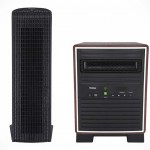As winter approaches, maintaining optimal indoor air quality becomes paramount for ensuring a healthy and comfortable living environment. This article explores effective strategies, including the option of buying furnace humidifiers at Furnace Part Source, which is also a good product to try to elevate indoor air quality during the colder months. From addressing the challenges of winter air to practical solutions, delve into the essentials that will help you breathe easier this winter.
Understanding Winter Air Quality Challenges
Winter poses distinct challenges to indoor air quality. With windows and doors sealed to keep the cold at bay, heating systems operating around the clock, and reduced natural ventilation, pollutants accumulate. Simultaneously, humidity levels plummet, which can be detrimental to health. The consequences include respiratory distress and intensified allergies. Understanding these seasonal air quality hurdles is essential for effectively safeguarding your well-being during the colder months.
Combatting Dry Air
One of the most significant concerns during the winter months is the prevalence of dry air, which can be attributed to the operation of heating systems like furnaces. These systems tend to remove moisture from the air as they work, leading to discomfort and an increased risk of respiratory problems. To effectively combat dry air and ensure a healthier indoor environment, consider the following additional strategies:
Proper Placement: Position your humidifier strategically within your home. Placing it in a central location can help distribute moisture evenly throughout the living spaces.
Regular Cleaning: Ensure that you clean and maintain your humidifier regularly. Neglected humidifiers can become breeding grounds for mold and bacteria, compromising indoor air quality.
Avoid Over-Humidification: While maintaining optimal humidity levels is essential, be cautious not to over-humidify your home, as excessive moisture can lead to other issues, such as mold growth. Keep an eye on humidity levels to strike the right balance.
Use Water Wisely: Use distilled water in your humidifier to prevent the release of minerals into the air. This can help maintain not only indoor humidity but also air quality.
By implementing these additional steps, you can effectively combat dry air, ensuring a more comfortable and healthier living environment during the winter season. Properly maintained humidifiers and vigilant humidity monitoring will go a long way in addressing this common winter concern.
Indoor Air Quality Maintenance
Maintaining clean indoor air is crucial for winter wellness. Consider the following steps to improve and maintain indoor air quality:
Change Air Filters: Ensure your heating system’s air filters are clean and replace them regularly. Clean filters facilitate better airflow and trap airborne particles.
Regular Cleaning: Dedicate time to regular cleaning routines. Dust and vacuum home to reduce the accumulation of allergens and irritants.
Ventilation: Weather permitting, open windows periodically to allow fresh air circulation. Even a few minutes of ventilation can help dilute indoor pollutants.
Addressing Allergens
Allergens can exacerbate existing respiratory conditions, particularly during the winter season.
Regularly Wash Bedding: Bedding can harbor dust mites and allergens. Wash sheets, pillowcases, and blankets in hot water regularly.
Pet Care: If you have pets, ensure they are bathed and groomed regularly. Vacuum carpets and upholstery frequently to remove pet dander.
Eliminating Indoor Pollutants
Indoor pollutants can originate from various sources, including cooking, cleaning, and household products.
Choose Eco-Friendly Cleaning Products: Opt for non-toxic, eco-friendly cleaning products to reduce the release of harmful chemicals into the air.
Proper Ventilation: Use exhaust fans while cooking to expel cooking odors and pollutants. Keep the area well-ventilated to prevent indoor air contamination.
Indoor Plants for Air Quality
Indoor plants are not just decorative; they can play a vital role in enhancing the air quality you breathe indoors. Among the standout air-purifying houseplants are the snake and spider plants, renowned for their ability to cleanse the air of common indoor pollutants.
These plants work magic by absorbing toxins like formaldehyde and benzene, often found in household items such as cleaning products and furniture. You can create pockets of cleaner, fresher air by strategically placing snake and spider plants in various rooms. These green companions not only contribute to a healthier home environment but also bring a refreshing touch of nature to your living spaces.
Conclusion
Taking proactive steps to elevate indoor air quality during the winter season is not just a matter of comfort but also a vital aspect of overall well-being. By implementing the recommended measures, look for furnace humidifiers at Furnace Part Source or other sources to combat dry air, maintain efficient ventilation, and reduce allergens and pollutants; you can create a healthier indoor environment for yourself and your family.
Remember that the benefits of improved indoor air quality extend beyond the winter months, positively impacting your respiratory health and overall quality of life year-round. Make these strategies a part of your regular home maintenance routine, and you’ll enjoy the benefits of fresher, cleaner air and a more pleasant living space throughout the seasons. Prioritize your winter wellness by prioritizing your indoor air quality.
Featured photo by Mor Shani on Unsplash.
MORE STUFF ON MIKESHOUTS
The post Winter Wellness: Elevate Your Indoor Air Quality appeared first on SHOUTS.




0 Commentaires